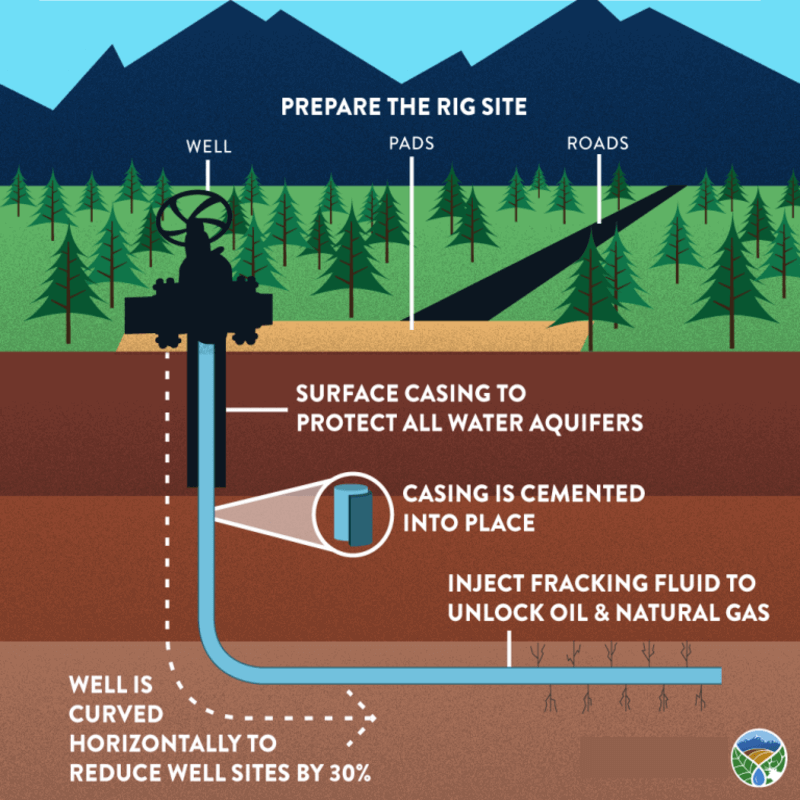
Hydrocarbons are organic chemical compounds composed entirely of hydrogen and carbon atoms. They are the simplest forms of organic compounds and serve as the fundamental building blocks for organic chemistry. Read here to learn about the geological processes, extraction methods, and environmental impact of hydrocarbon extraction.
Massive geological processes in the earth’s crust heated and squeezed together fragments of long-dead living forms over millennia.
These organic debris mulches eventually gathered hydrocarbons inside rock formations.
The primary cause of the two Industrial Revolutions was humankind’s discovery of a means to extract these hydrocarbons, which were then used to power numerous massive engines that contaminated the air, water, and atmosphere and ultimately contributed to global warming.
Hydrocarbons
Hydrocarbons are predominantly found in crude oil and natural gas, making them crucial resources for fuel and energy production and the creation of many synthetic materials.
- These are most frequently found in underground rock formations as natural gas, coal, crude oil, and petroleum.
- They are often found underground in reservoirs formed when a less resistant rock type is covered by a more resistant one, essentially acting as a lid to trap hydrocarbons beneath the more resistant rock type.
- If not for these formations, they would float to the surface and disappear.
Geological Processes
Hydrocarbons, primarily found in oil and natural gas, originate from decomposing organic matter (like plants and microscopic sea organisms) that accumulates on the sea or lake beds over millions of years.
The key steps in the geological formation include:
- Sedimentation: Organic material settles in sedimentary basins, mixing with silt and mud.
- Burial and Diagenesis: Sediments accumulate, burying the organic material under anoxic conditions, which prevents decomposition by oxygen. Over time, heat and pressure increase as layers build up.
- Catagenesis: At depths and temperatures higher than those of diagenesis, the organic material transforms into kerogen, and then into liquid and gaseous hydrocarbons.
- Migration: Hydrocarbons migrate from the source rock to more porous reservoir rocks through tiny pore spaces or cracks, driven by the pressure gradient.
- Trapping: Hydrocarbons are trapped by non-porous rocks (cap rocks) that prevent them from reaching the surface, forming oil and gas reservoirs.
Types of Hydrocarbons
They can be classified into several types based on their structure and bonding:
- Alkanes (Saturated):
- Structure: Consists of single bonds between carbon atoms.
- General Formula: CnH2n+2
- Examples: Methane (CH4) and ethane (C2H6).
- Properties: Non-reactive; used primarily as fuels.
- Alkenes (Unsaturated with Double Bonds):
- Structure: Contain at least one double bond between carbon atoms.
- General Formula: CnH2n
- Examples: Ethylene (C2H4) and propylene (C3H6).
- Properties: More reactive than alkanes due to the double bond; used in chemical synthesis and as a precursor for plastics.
- Alkynes (Unsaturated with Triple Bonds):
- Structure: Contain at least one triple bond between carbon atoms.
- General Formula: CnH2n−2
- Examples: Acetylene (C2H2).
- Properties: Extremely reactive; used in welding (oxy-acetylene torches) and as a chemical building block.
- Aromatic Hydrocarbons (Arenes):
- Structure: Contain rings of carbon atoms with alternating double bonds (aromatic rings).
- Examples: Benzene (C6H6) and toluene (C7H8).
- Properties: Stable due to their aromatic rings; used in the manufacture of dyes, detergents, and explosives.
Hydrocarbon extraction

Hydrocarbon extraction is a complex process that involves multiple steps from the geological formation of hydrocarbons to their extraction and usage.
Understanding this process is crucial for evaluating both the technical challenges and environmental impacts associated with hydrocarbons, particularly fossil fuels like oil and natural gas.
Extraction Methods
The extraction varies depending on their state (liquid or gas) and location:
- Drilling: The most common method involves drilling a well into the earth to reach the reservoir rock containing oil or gas.
- Onshore drilling typically occurs on land.
- Offshore drilling involves drilling wells on ocean floors, which can be technically challenging and more expensive.
- Fracking (Hydraulic Fracturing): This method is used particularly for extracting shale gas and tight oil. It involves injecting high-pressure fluid into the reservoir to fracture the rock and release the hydrocarbons.
- Enhanced Oil Recovery (EOR): Techniques like injecting steam, CO2, or chemicals to increase the amount of oil that can be extracted from a well.
Environmental Impact
The extraction and use of hydrocarbons have significant environmental implications:
- Air Pollution: Combustion of fossil fuels releases pollutants such as nitrogen oxides, sulfur dioxide, particulate matter, and volatile organic compounds into the atmosphere.
- Water Contamination: Hydraulic fracturing can lead to contamination of groundwater if chemicals used in the process seep into freshwater aquifers. Spills and leaks during drilling and transportation also pose risks to water bodies.
- Habitat Disruption: Both onshore and offshore drilling can disrupt local ecosystems. Onshore, the construction of access roads, installation of equipment, and land clearing can fragment habitats and displace wildlife. Offshore, drilling can disturb marine life through noise, pollution, and physical barriers.
- Climate Change: They are major sources of carbon dioxide when burned, contributing to global warming. Methane, a potent greenhouse gas, can also leak from oil and natural gas systems.
- Seismic Activity: Processes like hydraulic fracturing have been linked to an increase in seismic activity (induced earthquakes) due to the alteration of stresses in the earth’s crust.
Hydrocarbon sector in India
In January 2024, India signed a MoU with Guyana on cooperation in the hydrocarbon sector. The proposed MoU covers:
- the complete value chain of the hydrocarbon sector including sourcing of crude oil from Guyana,
- participation of Indian companies in the Exploration and Production (E&P) sector of Guyana,
- cooperation in the areas of crude Oil refining,
- capacity building,
- Strengthening bilateral trade,
- collaboration in the natural gas sector, collaboration in developing regulatory policy framework in the oil & gas sector in Guyana;
- Cooperation in the area of clean energy including biofuels as well as the renewables sector including solar energy etc.
Conventional hydrocarbons
- India has 26 sedimentary basins covering an area of 3.36 million square kilometres.
- The sedimentary basins of India, on land and offshore up to the 400m isobath, have an aerial extent of about 2.04 million sq. km.
- In the deepwater beyond the 400m isobath, the sedimentary area has been estimated to be about 1.32 million square kilometres.
Unconventional hydrocarbons
- Coal Bed Methane (CBM) Resources: The estimated CBM resources are of the order of 2,600 billion Cubic Metres (BCM) or 91.8 trillion Cubic Feet (TCF) spread over 11 States in the country.
- Shale Gas/Oil Resources: It is estimated that several sedimentary basins (Gangetic Plain, Gujarat, Rajasthan, Andhra Pradesh and other coastal areas) in India, including the hydrocarbon-bearing ones – Cambay, Assam-Arakan and Damodar have substantial estimates of shale gas and oil.
- Gas hydrates: In India, Gas hydrate research and exploratory activities are being steered by the Ministry of Petroleum & Natural Gas under the National Gas Hydrate Program (NGHP). The presence of Gas Hydrate is established in Krishna Godavari, Mahanadi, Gulf of Mannar and Andaman Basin.
Conclusion
Given these environmental impacts, there is increasing pressure to transition to more sustainable energy sources and improve the environmental safety measures of hydrocarbon extraction processes.
This includes stricter regulations, better management practices, and the development of technology to minimize ecological damage.
Related articles:
-Article by Swathi Satish






Leave a Reply